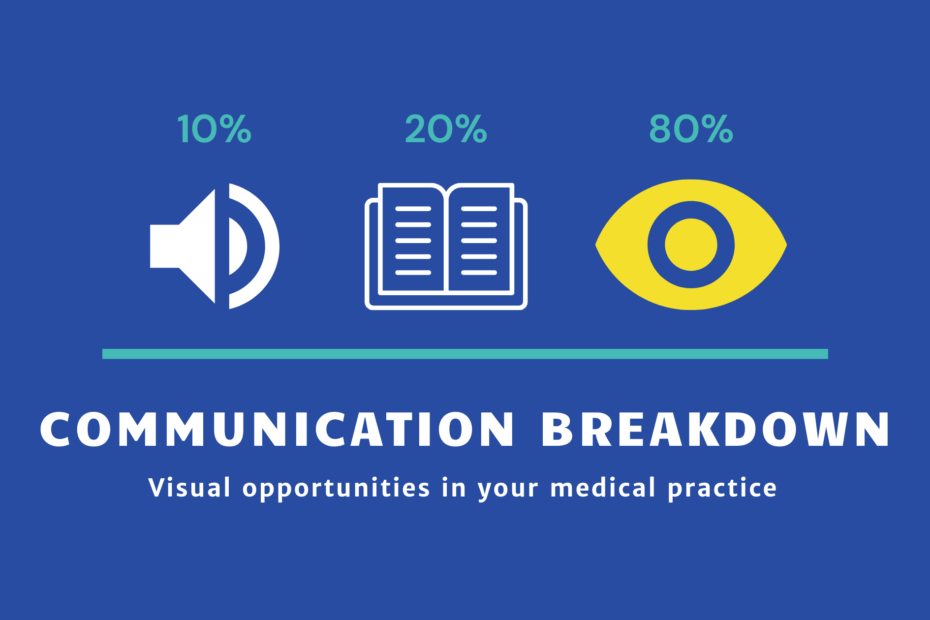It’s not just what they hear. It’s what they see.
It’s tempting to think of communication as being about what we say or how well we listen. Doctors are continually trying to figure out how to be more effective communicators in this regard. While admirable, communication is not just what we say or hear. It’s also what we see, and what people recall is heavily weighted to what they see over what they read or hear.
As indicated in this simple graphic above, people remember only 10% of what they hear and 20% of what they read. But they remember 80% of what they see.
The implications of this simple truth create multiple opportunities for the practice.
First, do a walkthrough and seek out visuals that are negative cues in the patient experience. Are the magazines in a messy pile? Are there taped signs to doors and walls that look as if the office doesn’t care enough? You get the idea — pay attention to items in the environment that you no longer see because you walk past them so many times a day. Your patient may only be in once or twice, but they will notice them and form impressions about your practice in milliseconds.
Second, think about all the signage that exists in your office. Every sign should have a purpose in communication. If not, consider removing it. If so, is there a better way to communicate what’s on that sign?
Whether it’s informational, educational, or inspirational, every sign is a chance to present yourself and speak to patients. Developing a unique look, as well as tone and voice, is crucial to “branding yourself.” It makes the environment feel more familiar and inviting. It adds a sense of warmth and humanity to a place that is usually thought of as cold and sterile. Not only that, but it shows you put effort into the experience you offer your patients. It shows there’s depth to who you are … and it sets you apart.
Believe it or not, those seemingly small things in your office really have a huge impact on your patients. If perception is reality, then your practice has to look good from every angle. Your patients are going to see everything and jump to conclusions based solely on their viewpoints.
When I teach theming methodology with clients, we explore opportunities to rename certain rooms as part of creating a more memorable patient experience. “Exam Room 1” is generic and, while functionally correct, misses the opportunity to name and possibly theme the exam rooms in ways that patients and staff alike will appreciate.
And while there typically is not a sign for the “waiting room,” I devote an entire chapter of the book to the need to not only rename but rethink the purpose of this area. As one surgeon recently shared with me, “we burned down the waiting room and have repurposed the space for revenue-generating activities.” He and his staff have a weekly meeting to discuss ideas fostered by Beyond Bedside Manner. I encourage you to follow suit by joining the PX Movement.

